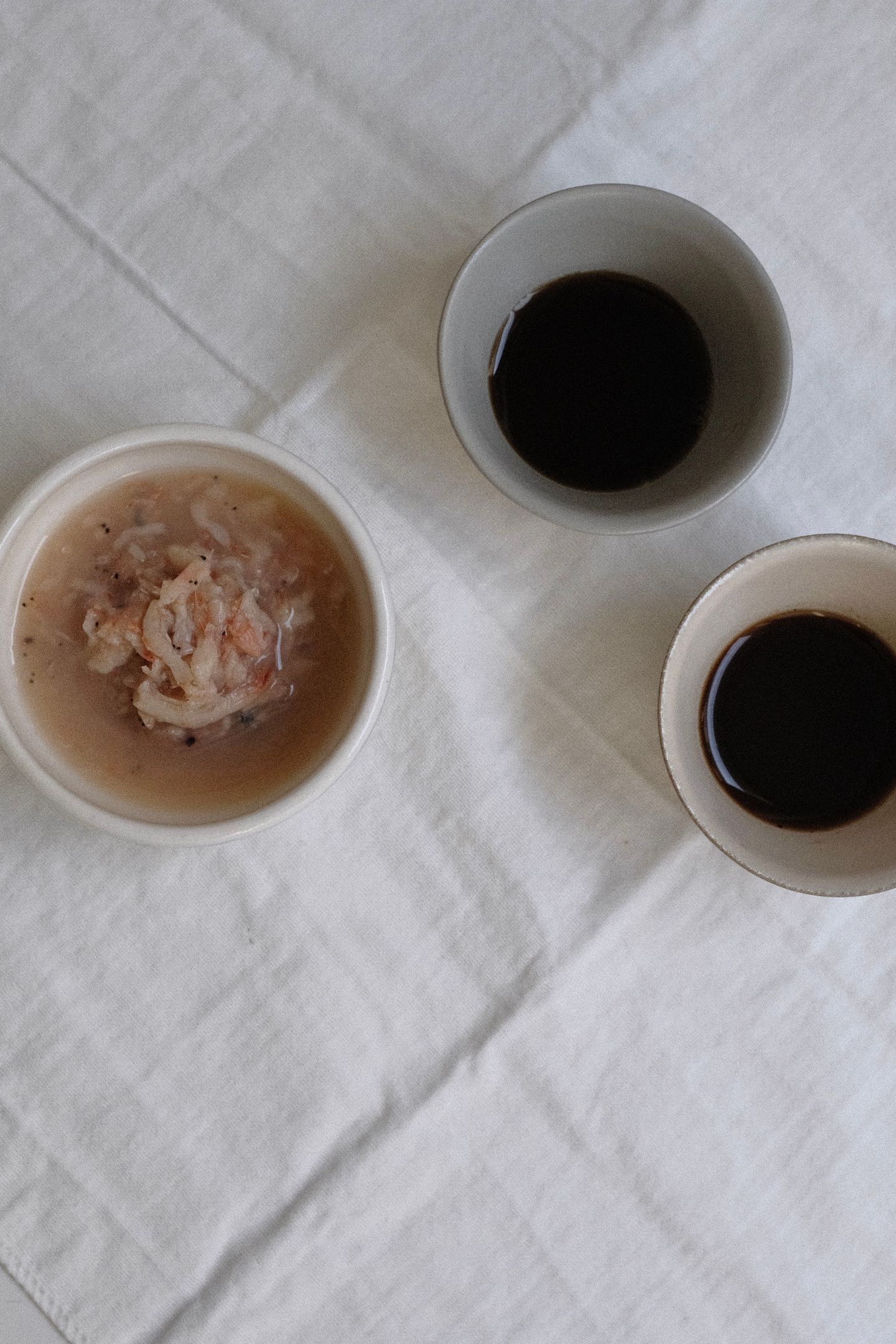[Description]
It's made by salting and fermenting seafood. There is a variety of Jeotgal, depending on ingredients and way to make it.
[Usage]
It adds saltiness and umami(pleasant savory taste) to food. It's used in kimchi, Jjim(steaming), Guk(soup), Jjigae(stew), Jorim(simmering), Bokkeum(stir-frying), and Muchim(salad). There is a variety of Jeotgal, but they all come to one conclusion: umami. When seafood is salted and fermented, the saltiness prevents rotting, and it gets fermented slowly. Also, the enzyme from their internal organs and muscles decomposes the seafood. As time goes by, the meat becomes soft, some of the fishy odor disappears, and it gains concentrated umami.
It's easy to find Saeu-jeot(salted shrimp), Kkanari aekjeot(fish sauce from Pacific sandlance), and Myeolchi aekjeot(salted anchovy sauce). They are used in many foods.
Saeu-jeot is small shrimps that are salted and fermented. It's used in kimchi, Jjim(steaming), Guk(soup), Jjigae(stew), Jorim(simmering), and Bokkeum(stir-frying). When you add saltiness to food, it's rare to use Saeu-jeot only. Usually, Ganjang(soy sauce) or salt are used together. Saeu-jeot is good with cabbage, Chinese cabbage, radish, bean sprout, pork, zucchini, egg, tofu, etc.
Saeu-jeot is not oily. It has a refreshing and savory taste. When used in radish or cabbage kimchi, Saeu-jeot adds savory taste while not disturbing the radish or cabbage flavor. It works well when boiling dried pollack soup with cabbage and bean sprouts. It's also paired well with fatty meat like pork. Apart from the taste, it helps digest because it contains the enzyme to decompose fat and protein. A couple of ingredients added to Saeu-jeot is a good sauce for pork dishes. Or, it goes into braised pork or pork stew.
They are fish sauce made from salted and fermented anchovy or Kkanari(Pacific sandlance). It's used in kimchi, Jangajji(pickled vegetables), Jjim(steaming), Guk(soup), Jjigae(stew), Jorim(simmering), Bokkeum(stir-frying), and Muchim(salad). You can use them instead of soy sauce or in addition to it. Myeolchi aekjeot has a deep taste and smell. Kkanari aekjeot is relatively subtle and a little sweet.
[Storage]
Store Saeu-jeot in a sealed container in a freezer. It's too salty to be frozen. So you can use it without defrosting. If Saeu-jeot is too old, you can make a fish sauce out of it by blending, boiling with water and salt added, and straining it with a cotton cloth. It's good to store all the fish sauces in the fridge.
[How it's made]
Wash the seafood with seawater, drain, and salted them. The amount of salt is 20~40% of the weight of the seafood. The salt percentage depends on many variables like the type of seafood, the condition, the season, and the environment. Mix the seafood with some salt and stack them with the remaining salt in a dark container. With a lid closed, let it fermented in a shady place for 4 to 5 months. To make aekjeot(fish sauce), it needs to be fermented for 6 to 12 months to soften the flesh.
